Discover the Splendor of Wat Chedi Luang
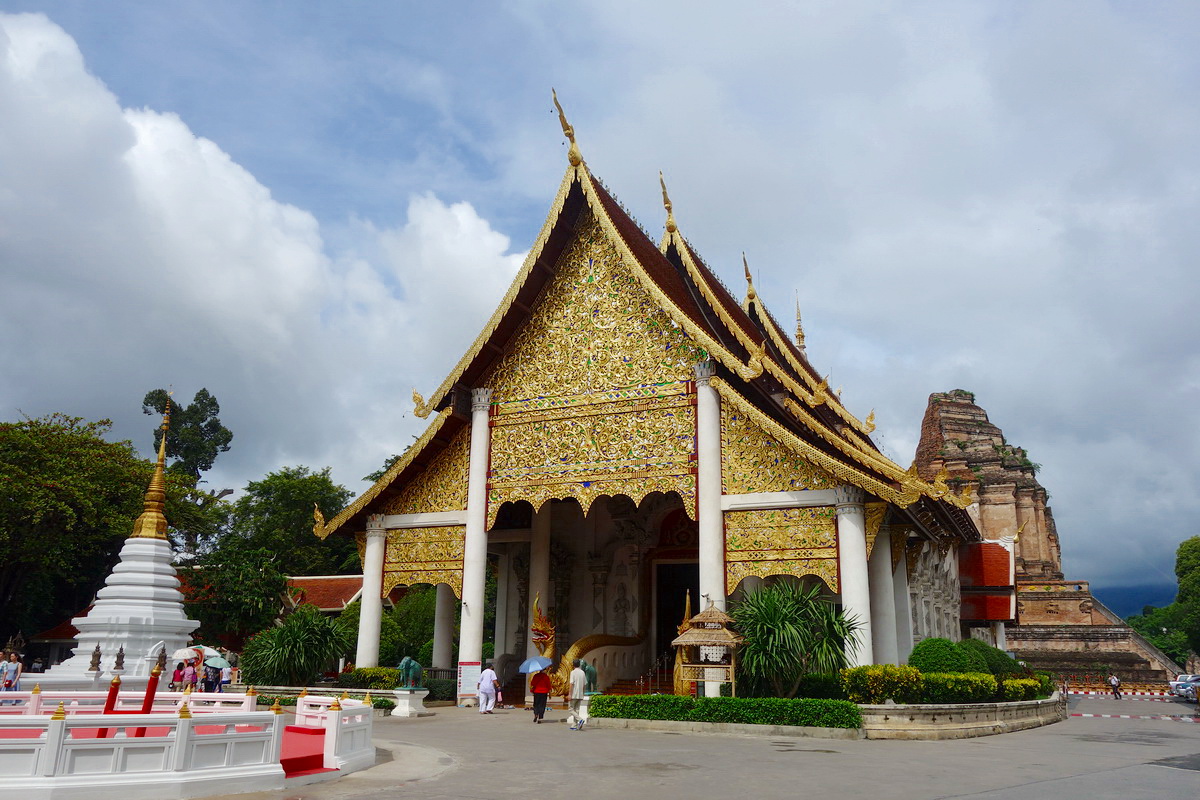
Unveiling the Historical Significance of Wat Chedi Luang
Nestled in the heart of Chiang Mai, the Chedi Luang Temple, also known as Wat Chedi Luang, is an iconic symbol of the city’s rich heritage. Constructed during the reign of King Saen Muang Ma in the late 14th century, this temple is a testament to Lanna architecture and history. The name “Wat Chedi Luang” translates to “Temple of the Great Stupa,” reflecting the immense size and importance of the structure. Wat Chedi Luang or Wat Chedi Luang Varaviharn is more than a sacred site — it is a living archive of Lanna architecture. Though time and natural disasters have scarred its surface, the temple’s design elements remain among the finest representations of northern Thai artistry. For anyone fascinated by temple structures and Chiang Mai Attractions, this monument invites admiration not through flamboyance, but through depth, geometry, and layered history.
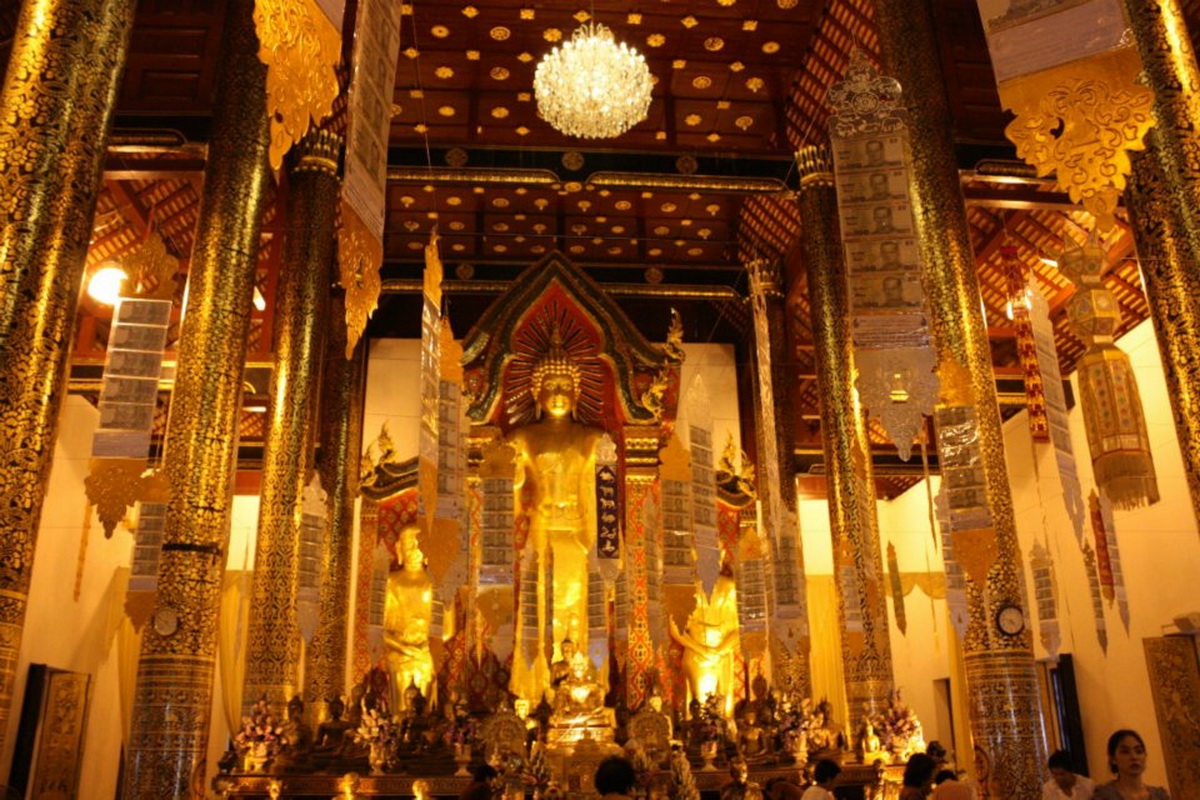
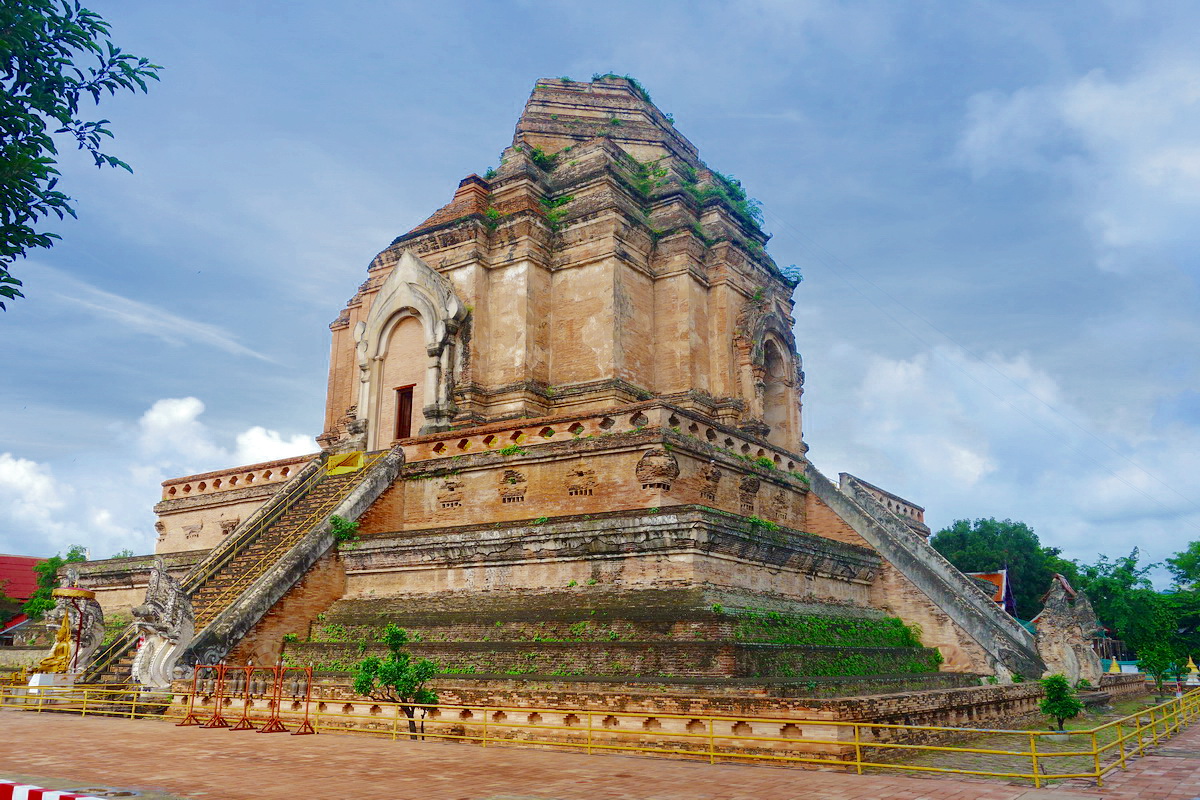
🏛️ The Massive Chedi – Tower of the Lanna Legacy
Once soaring nearly 90 meters into the sky, the grand chedi of Wat Chedi Luang was among the tallest structures in the ancient Lanna Kingdom. Constructed over decades beginning in the late 14th century, its scale reflected both spiritual ambition and political power. In 1545, a catastrophic earthquake destroyed the upper third of the structure, reducing its height to approximately 60 meters. Despite this, the chedi still dominates Chiang Mai’s skyline.
Restoration efforts in the 1990s, supported by UNESCO and the Japanese government, stabilized the ruins without altering their ancient soul. Each of the four sides of the chedi features a grand staircase guarded by intricately sculpted Naga serpents, leading to niches once used to house sacred Buddha images. The most iconic visual elements are the stone elephant sculptures that appear to rise out of the brick base — a symbolic blend of earthly strength and spiritual majesty. These forms are not merely decorative; they reflect cosmological symbolism within Theravada Buddhist beliefs.
✨ Viharn Luang and the Phra Attharot
The Viharn Luang, constructed in 1928, stands as a fine example of 20th-century Lanna revival architecture. Its three-tiered roofline soars above ornately carved wooden doors and columns, leading to the temple’s spiritual centerpiece — Phra Attharot, an 18-cubit-high standing Buddha image. Cast in the late 14th century, this bronze statue reflects the Abhaya mudra posture, symbolizing protection and fearlessness. The proportions and refined facial expression of the statue embody the ideal balance of grace and strength, characteristic of northern Thai sculpture.
🏯 Dual Viharns – A Tale of Two Sanctuaries
Beyond the Viharn Luang, the temple complex also houses the smaller Viharn Lai Kham, noted for its intricate wooden detailing and intimate atmosphere. Though often overlooked, this viharn reflects the delicate craftsmanship of Lanna artisans, with gabled roofs, gilded naga finials, and floral motifs that evoke both mythology and devotion. Together, the two viharns form the ceremonial heart of Wat Chedi Luang Varaviharn, where worshippers gather for prayers, chanting, and cultural rites.
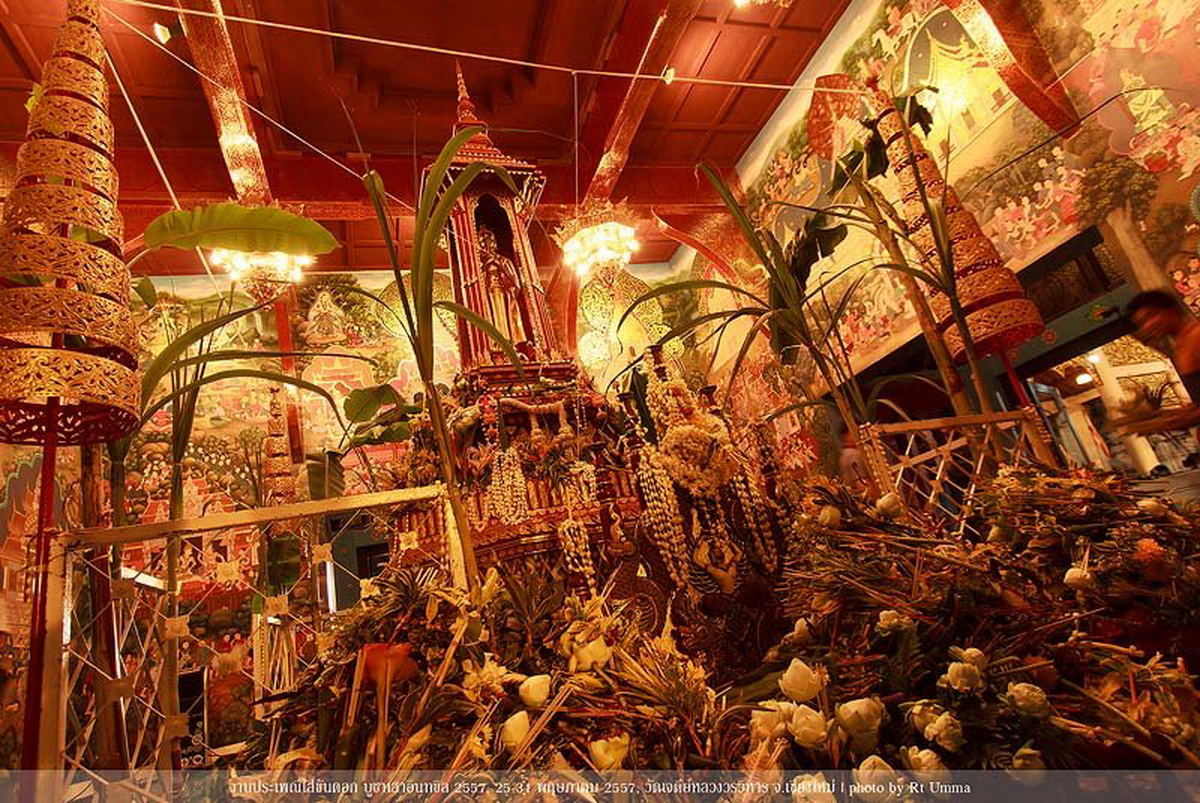

🕊️ Sao Inthakin – Chiang Mai’s Sacred Pillar
Tucked within the complex is one of Chiang Mai’s most revered relics — the Sao Inthakin, or City Pillar. This wooden pillar is believed to protect the city’s spiritual health and prosperity. Housed in a modest open-sided pavilion, it may seem visually simple, but its ritual importance is immense.
Each May, the Inthakhin Festival is held to honor the pillar with flower offerings, candlelight processions, and chants echoing across the old city. For locals, this is more than tradition — it is a communal invocation for blessings, rains, and balance. For visitors, witnessing or participating in these rituals provides a rare, intimate view into Chiang Mai’s spiritual pulse.
🎯 Cultural Significance Through Time
Wat Chedi Luang was once the temporary home of Thailand’s most venerated icon — the Emerald Buddha. Installed in 1468, its presence elevated the temple to national significance within the Lanna Kingdom. Though the image was later moved to Luang Prabang and ultimately to the Grand Palace in Bangkok, a replica now resides in one of the chedi’s niches as a tribute to its historical presence.
This temple is also known for its Monk Chat program, where visitors can converse with resident monks on topics ranging from daily life to Buddhist philosophy. More than a tourist gimmick, it is a dialogue between tradition and modern curiosity, fostering cultural understanding and mutual respect.
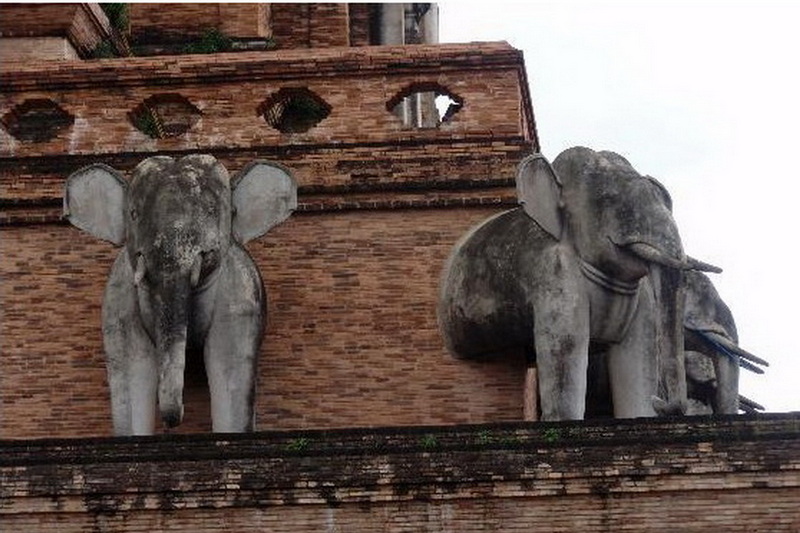
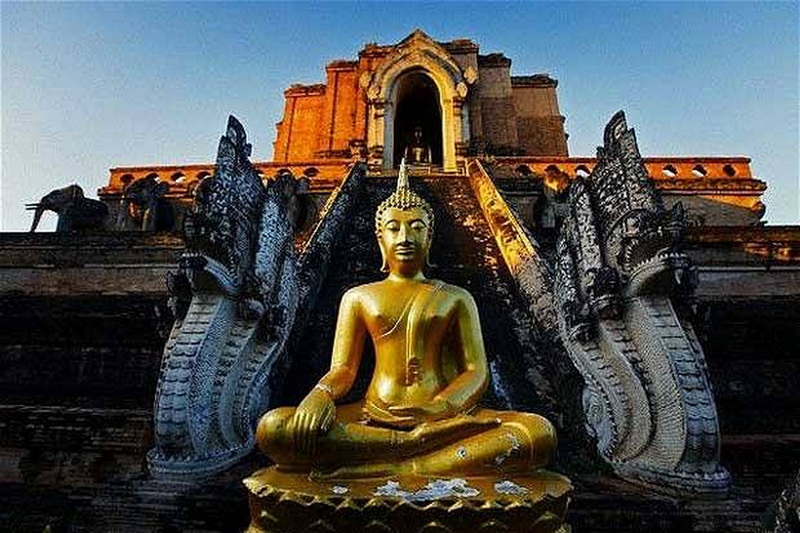
🧭 Why You Should Visit Chedi Luang Temple
Chedi Luang Temple isn’t just a historical monument; it’s a place where culture, spirituality, and community come together. The temple’s serene atmosphere, combined with its rich history, offers a unique glimpse into the soul of Chiang Mai. Whether you’re exploring the ancient structures or engaging in a conversation with a monk, Wat Chedi Luang provides an unforgettable experience. Participating in the Monk Chats is a highlight, allowing for a meaningful exchange that enhances your understanding of Thai culture and religion.
🚕 How to Get There
The temple is located on Phra Pok Klao Road in Chiang Mai’s Old City. It is easily accessible by tuk‑tuk, red songthaews, or on foot from nearby hotels and attractions. Entrance fees are minimal for foreigners, and the site is open daily. For those planning a Tour Chiang Mai route focused on heritage and design, this temple is a non-negotiable inclusion.
Embark on a journey to discover the timeless beauty and spiritual depth of Wat Chedi Luang. Book your Chiang Mai Day Tour now and immerse yourself in the heart of Lanna culture. This experience is not only enlightening but also deeply enriching, making it a must-visit on any trip to Chiang Mai.
